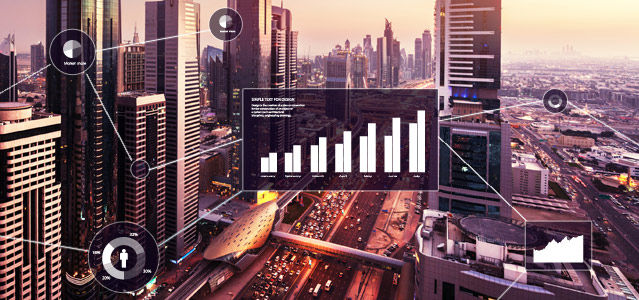Revenue recognition is a complex process, but it doesn’t need to be quite as complicated or all-encompassing. In fact, the ASC 606 and IFRS 15 revenue recognition standards were designed to streamline and standardize revenue recognition. There are three areas of revenue recognition that the standards impact:
- How a business defines contracts with customers
- How pricing and quotes for contracts are established
- How revenue from fulfilling contracts is recognized
For a deep dive into these standards, check out this blog – What is ASC 606 Revenue Recognition?
Revenue Recognition: The Basics
Essentially, revenue can only be recognized when realized and earned – not necessarily when products are delivered, services are rendered or payment is received. Sounds simple enough, doesn’t it? Not always. Given the combination of contracts involving various revenue recognition schedules, complications can and do arise as to when revenue can be recognized. To illustrate, we’ve broken it down into three categories:
Point-in-time revenue recognition
Considered the most basic revenue recognition process, it allows companies to recognize revenue as soon as an invoice is sent or when a service is rendered. For example, let’s assume that you own a plumbing company. A customer needs a new water heater, as well as your services to install the tank. Once installed, an invoice is presented to the customer for immediate payment and revenue can be recognized.
Scheduled revenue recognition
Also referred to as overtime revenue recognition, it allows companies to recognize revenue based on a set interval of time. Timing can be daily, weekly, monthly, or even customized. Customized revenue recognition enables you to set timings based on contracts, customers, or groups of customers. For instance, an over-the-top TV provider is targeting new subscribers by offering three months of free viewing. We’ll assume that the cost per month is $25, however since new subscribers will receive 15 months of viewing instead of 12, the provider will need to recognize revenue over a 15 month period. Instead of recognizing $25 per month from subscribers that accepted the offer, they will recognize $20 per month for 15 months (15 x $20 = $300) as opposed to (12 x $25 = 300).
Performance Obligation revenue recognition
One example is milestone revenue recognition. This type of revenue recognition is a unique feature of BillingPlatform that enables companies to recognize revenue based on milestones or events set up in the system. Revenue events can be anything that’s relevant to an individual company or contract such as the completion of a job, generation of a purchase order, the creation of an invoice, a usage threshold, etc. Performance obligations allow companies to divide revenue into segments, where portions of the revenue is recognized during different events or timeframes. For example, your kitchen remodeling company’s pricing model may be to receive one-third of the payment once the contract is signed, one-third when the cabinets have been installed, and the final third at the conclusion and acceptance of the finished job.
Since revenue recognition is one of the most critical line items in your financial reporting, overcoming complications is crucial. Let’s take a look at some of the most common difficulties businesses encounter.
The Complications of Revenue Recognition
Adding to the inherent complexities of revenue recognition are the varying ways in which revenue can be recognized. There are two primary accounting methods – cash basis and accrual basis. Each contains pros and cons and will be better situated for some industries than others. To get a better idea of which accounting method your business is best suited for, take a look at our Revenue Recognition Explored blog.
In addition, depending on your business model there are various ways to recognize revenue, including sales basis, percentage of completion method, installment method, completed contract method, and cost recovery method. Finally, if you run a software-as- a-service (SaaS) business, the complications of recognizing revenue are further compounded.
SaaS businesses are typically paid in advance for access to the software that will be used throughout the contract term. However, complexities in recognizing revenue can arise when one or more of the following occur:
- Subscription cancellations prior to the contract end date
- Upgrades from basic plans to top-tier plans
- Downgrades from top-tier plans to basic plans
- Changes to services provided
- Inability to collect money owed
Saying that SaaS revenue recognition is unlike other models would be an understatement. Most SaaS businesses offer a variety of subscription plans and pricing models such as usage-based, hybrid billing, dynamic billing, etc. along with a nearly infinite number of combinations.
You need to recognize revenue as soon as possible, while staying within the guidelines of ASC 606 or IFRS 15. Recognize revenue too early and you’re at risk of a GAAP violation, delay revenue recognition and you may lose finance credibility.
With the many scenarios that can affect how and when you can recognize and report revenue, you need a system that’ll do the work for you.
Use Automation to Simplify Revenue Recognition
Are you still gathering information from multiple sources to manually calculate revenue recognition? If so, you know it’s time-consuming and prone to errors. The key to simplifying revenue recognition is through automation. However, acquiring the right revenue recognition solution shouldn’t be left to chance. Here are four key characteristics the software should provide.
- Contract management: The solution needs to enable you to easily manage contract rates and payment terms, as well as provide the ability to set specific pricing, define rules, and create account hierarchies.
- Flexible data model: A system that provides an extensible data model allows you to easily add objects, fields, and relationships in order to apply business rules that can support any monetization model. In addition, a flexible data model provides for modifications of the application and data structure so that you can quickly respond to market or regulatory changes.
- Seamless integration: Connecting all of your essential applications such as customer relationship management (CRM), enterprise resource planning (ERP), general ledger, etc. provides for a fully integrated financial ecosystem.
- Global compliance: Whether you currently conduct business on a global basis or are in the planning stages, you need to be sure that you’re able to easily comply with local regulations. From regional taxation to GDPR, ASC 606 and/or IFRS 15 staying compliant is a necessity.
The right revenue recognition platform enables you to simplify even the most complex billing scenarios. With BillingPlatform, you can automatically assign financial transactions and execute revenue recognition in real-time – as events happen. Our rules-based revenue scheduling gives finance teams the flexibility to automatically allocate transactions to specific GL accounts. With real-time subledger transactions that integrate into downstream ERP and accounting systems you’re able to eliminate error-prone manual efforts and speed the financial closure process.
Contact us today to learn more about simplifying revenue recognition.






